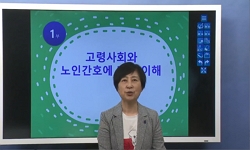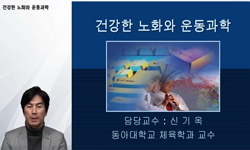Objective: To compare changes in T2 relaxation on magnetic resonance (MR) images of knee articular cartilage in younger and older amateur athletes before and after running. Materials and Methods: By using a 3.0-T MR imager, quantitative T2 maps of we...
http://chineseinput.net/에서 pinyin(병음)방식으로 중국어를 변환할 수 있습니다.
변환된 중국어를 복사하여 사용하시면 됩니다.
- 中文 을 입력하시려면 zhongwen을 입력하시고 space를누르시면됩니다.
- 北京 을 입력하시려면 beijing을 입력하시고 space를 누르시면 됩니다.



Comparison of MRI T2 Relaxation Changes of Knee Articular Cartilage before and after Running between Young and Old Amateur Athletes
한글로보기https://www.riss.kr/link?id=A104530486
- 저자
- 발행기관
- 학술지명
- 권호사항
-
발행연도
2012
-
작성언어
English
-
주제어
Knee joint ; Cartilage ; MR imaging ; Aging
-
등재정보
KCI등재,SCIE,SCOPUS
-
자료형태
학술저널
-
수록면
594-601(8쪽)
-
KCI 피인용횟수
15
- DOI식별코드
- 제공처
-
0
상세조회 -
0
다운로드
부가정보
다국어 초록 (Multilingual Abstract)
Objective: To compare changes in T2 relaxation on magnetic resonance (MR) images of knee articular cartilage in younger and older amateur athletes before and after running.
Materials and Methods: By using a 3.0-T MR imager, quantitative T2 maps of weight-bearing femoral and tibial articular cartilages in 10 younger and 10 older amateur athletes were acquired before, immediately after, and 2 hours after 30 minutes of running. Changes in global cartilage T2 signals of the medial and lateral condyles of the femur and tibia and regional cartilage T2 signals in the medial condyles of femoral and tibia in response to exercise were compared between the two age groups.
Results: Changes in global cartilage T2 values after running did not differ significantly between the age groups. In terms of the depth variation, relatively higher T2 values in the older group than in the younger group were observed mainly in the superficial layers of the femoral and tibial cartilage (p < 0.05).
Conclusion: Age-related cartilage changes may occur mainly in the superficial layer of cartilage where collagen matrix degeneration is primarily initiated. However, no trend is observed regarding a global T2 changes between the younger and older age groups in response to exercise.
참고문헌 (Reference)
1 Gold GE, "What’s new in cartilage?" 23 : 1227-1242, 2003
2 Van Breuseghem I., "Ultrastructural MR imaging techniques of the knee articular cartilage: problems for routine clinical application" 14 : 184-192, 2004
3 Mamisch TC, "Quantitative T2 mapping of knee cartilage: differentiation of healthy control cartilage and cartilage repair tissue in the knee with unloading--initial results" 254 : 818-826, 2010
4 Nag D, "Quantification of T(2) relaxation changes in articular cartilage with in situ mechanical loading of the knee" 19 : 317-322, 2004
5 Stehling C, "Patellar cartilage: T2 values and morphologic abnormalities at 3.0-T MR imaging in relation to physical activity in asymptomatic subjects from the osteoarthritis initiative" 254 : 509-520, 2010
6 Glaser C, "New techniques for cartilage imaging: T2 relaxation time and diffusion-weighted MR imaging" 43 : 641-653, 2005
7 Goodwin DW, "Macroscopic structure of articular cartilage of the tibial plateau: influence of a characteristic matrix architecture on MRI appearance" 182 : 311-318, 2004
8 Burstein D, "MRI techniques in early stages of cartilage disease" 35 : 622-638, 2000
9 Mosher TJ, "MR imaging and T2 mapping of femoral cartilage: in vivo determination of the magic angle effect" 177 : 665-669, 2001
10 Mosher TJ, "Human articular cartilage: influence of aging and early symptomatic degeneration on the spatial variation of T2--preliminary findings at 3 T" 214 : 259-266, 2000
1 Gold GE, "What’s new in cartilage?" 23 : 1227-1242, 2003
2 Van Breuseghem I., "Ultrastructural MR imaging techniques of the knee articular cartilage: problems for routine clinical application" 14 : 184-192, 2004
3 Mamisch TC, "Quantitative T2 mapping of knee cartilage: differentiation of healthy control cartilage and cartilage repair tissue in the knee with unloading--initial results" 254 : 818-826, 2010
4 Nag D, "Quantification of T(2) relaxation changes in articular cartilage with in situ mechanical loading of the knee" 19 : 317-322, 2004
5 Stehling C, "Patellar cartilage: T2 values and morphologic abnormalities at 3.0-T MR imaging in relation to physical activity in asymptomatic subjects from the osteoarthritis initiative" 254 : 509-520, 2010
6 Glaser C, "New techniques for cartilage imaging: T2 relaxation time and diffusion-weighted MR imaging" 43 : 641-653, 2005
7 Goodwin DW, "Macroscopic structure of articular cartilage of the tibial plateau: influence of a characteristic matrix architecture on MRI appearance" 182 : 311-318, 2004
8 Burstein D, "MRI techniques in early stages of cartilage disease" 35 : 622-638, 2000
9 Mosher TJ, "MR imaging and T2 mapping of femoral cartilage: in vivo determination of the magic angle effect" 177 : 665-669, 2001
10 Mosher TJ, "Human articular cartilage: influence of aging and early symptomatic degeneration on the spatial variation of T2--preliminary findings at 3 T" 214 : 259-266, 2000
11 Csintalan RP, "Gender differences in patellofemoral joint biomechanics" 260-269, 2002
12 Mosher TJ, "Functional cartilage MRI T2 mapping: evaluating the effect of age and training on knee cartilage response to running" 18 : 358-364, 2010
13 Lane NE, "Exercise and osteoarthritis" 11 : 413-416, 1999
14 Lüsse S, "Evaluation of water content by spatially resolved transverse relaxation times of human articular cartilage" 18 : 423-430, 2000
15 Rubenstein JD, "Effects of compression and recovery on bovine articular cartilage: appearance on MR images" 201 : 843-850, 1996
16 Cymet TC, "Does long-distance running cause osteoarthritis?" 106 : 342-345, 2006
17 Liess C, "Detection of changes in cartilage water content using MRI T2-mapping in vivo" 10 : 907-913, 2002
18 Hollander AP, "Damage to type II collagen in aging and osteoarthritis starts at the articular surface, originates around chondrocytes, and extends into the cartilage with progressive degeneration" 96 : 2859-2869, 1995
19 Mosher TJ, "Change in knee cartilage T2 at MR imaging after running: a feasibility study" 234 : 245-249, 2005
20 White LM, "Cartilage T2 assessment: differentiation of normal hyaline cartilage and reparative tissue after arthroscopic cartilage repair in equine subjects" 241 : 407-414, 2006
21 Mosher TJ, "Cartilage MRI T2 relaxation time mapping: overview and applications" 8 : 355-368, 2004
22 Crema MD, "Articular cartilage in the knee: current MR imaging techniques and applications in clinical practice and research" 31 : 37-61, 2011
23 Lüsse S, "Action of compression and cations on the proton and deuterium relaxation in cartilage" 33 : 483-489, 1995
동일학술지(권/호) 다른 논문
-
- 대한영상의학회
- 김인중
- 2012
- KCI등재,SCIE,SCOPUS
-
- 대한영상의학회
- 오혜연
- 2012
- KCI등재,SCIE,SCOPUS
-
- 대한영상의학회
- 석지현
- 2012
- KCI등재,SCIE,SCOPUS
-
Korea’s Contribution to Radiological Research Included in Science Citation Index Expanded, 1986-2010
- 대한영상의학회
- 구유진
- 2012
- KCI등재,SCIE,SCOPUS
분석정보
인용정보 인용지수 설명보기
학술지 이력
| 연월일 | 이력구분 | 이력상세 | 등재구분 |
|---|---|---|---|
| 2023 | 평가예정 | 해외DB학술지평가 신청대상 (해외등재 학술지 평가) | |
| 2020-01-01 | 평가 | 등재학술지 유지 (해외등재 학술지 평가) |  |
| 2016-11-15 | 학회명변경 | 영문명 : The Korean Radiological Society -> The Korean Society of Radiology |  |
| 2010-01-01 | 평가 | 등재학술지 유지 (등재유지) |  |
| 2007-01-01 | 평가 | 등재학술지 선정 (등재후보2차) |  |
| 2006-01-01 | 평가 | 등재후보 1차 PASS (등재후보1차) |  |
| 2003-01-01 | 평가 | 등재후보학술지 선정 (신규평가) |  |
학술지 인용정보
| 기준연도 | WOS-KCI 통합IF(2년) | KCIF(2년) | KCIF(3년) |
|---|---|---|---|
| 2016 | 1.61 | 0.46 | 1.15 |
| KCIF(4년) | KCIF(5년) | 중심성지수(3년) | 즉시성지수 |
| 0.93 | 0.84 | 0.494 | 0.06 |




 KCI
KCI






